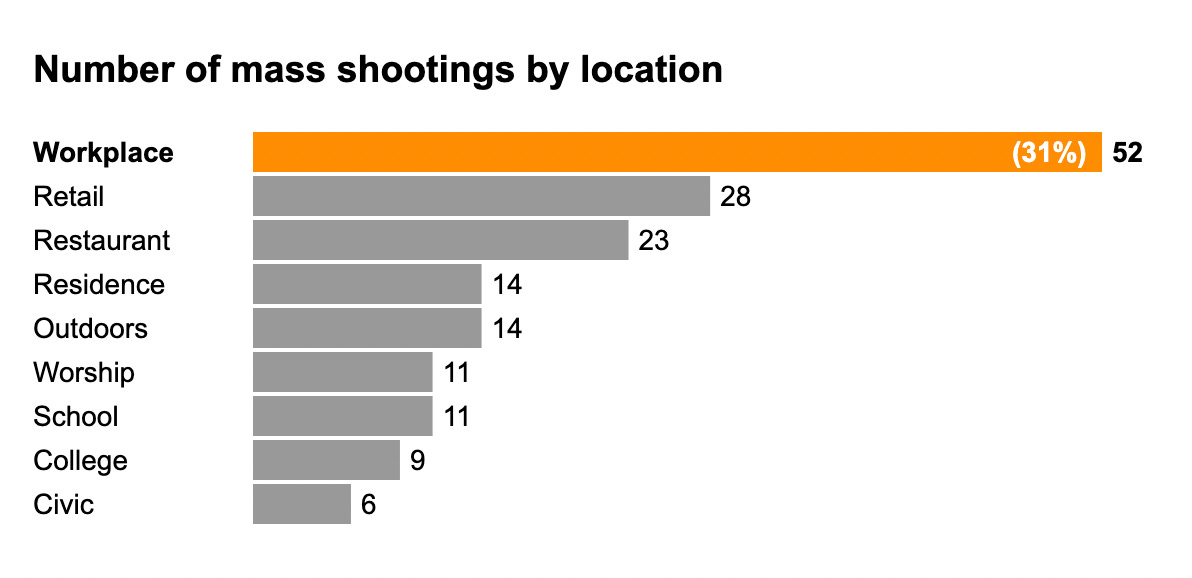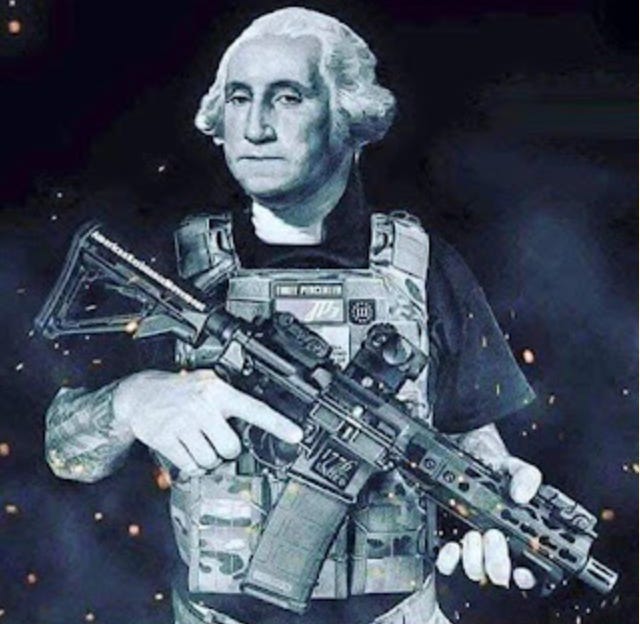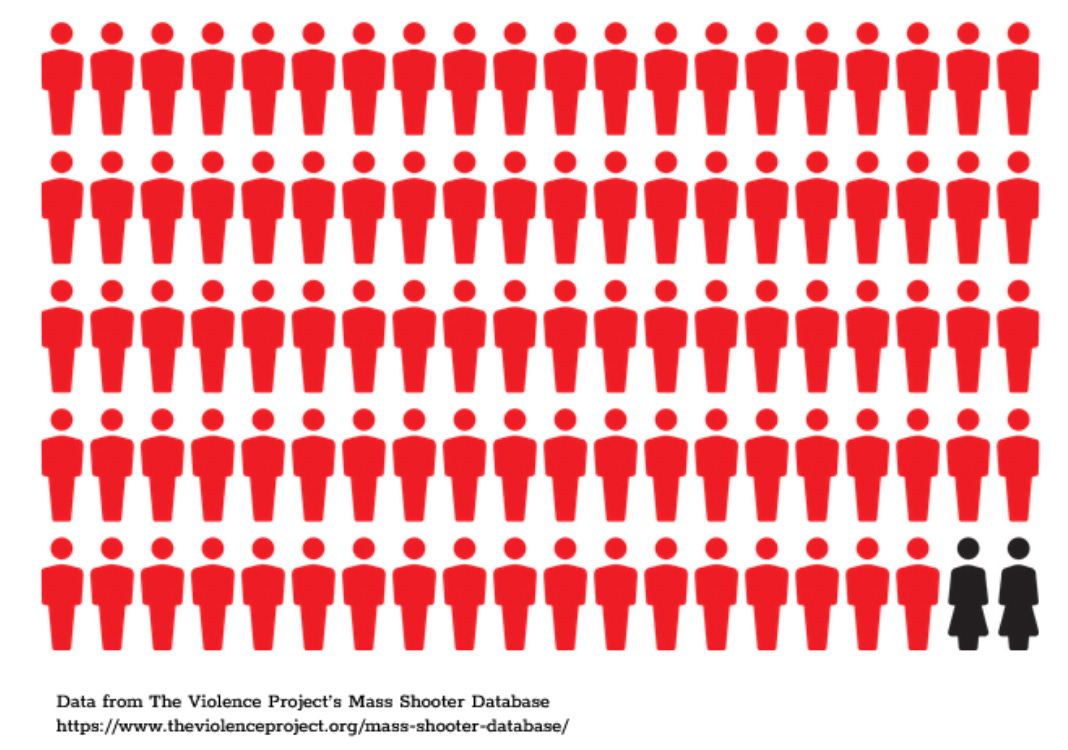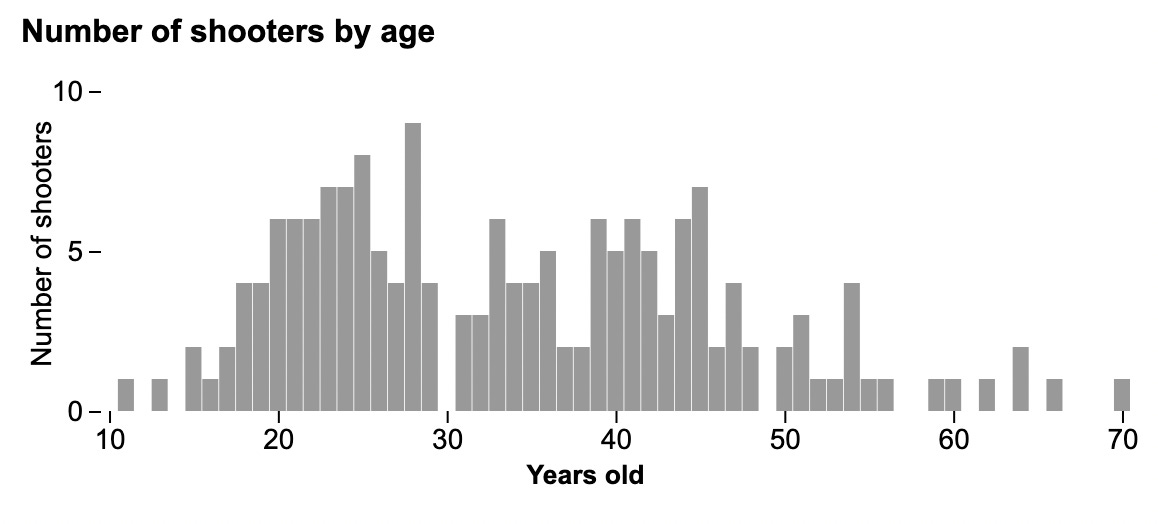People have been shooting one another for centuries over money, love, revenge, or power. Every country has gangland slayings and assassinations, as just happened in Japan, but the “American Mass Murder of the 20th Century” is unique and becoming commonplace in the States. It involves the indiscriminate slaughter of innocent strangers in a public place with high-powered weapons of war. The first such “public massacre” occurred in 1966 when an ex-Marine killed 14 and injured 31 people from the top of a Texas Tower until he was shot by police. That crime marked the beginning of a deadly American pathology -- the mass shooting — which is a theatrical suicide involving victims as props, and is usually perpetrated by a young white male who is a “grievance collector”. In most of these cases, shooters kill themselves or die by police fire. But all these acts of hate or vengeance are eventually televised, or streamed. They promise fame by gunfire.
America’s failure to limit guns is rooted in an antiquated “right to bear arms” Second Amendment of its constitution, that’s an excuse. The nation’s dysfunctional culture is why there are few gun controls. Mass shootings, defined as the killing of four or more people, are commonplace. In 2022, there have been 309 so far; in 2021, there were 692; in 2020 there were 610 and in 2019, 417 in 2019, according to the Gun Violence Archive.
Such carnage outpaces all other countries, save those involved in an active war, including nations where guns are also prevalent, restrictions are lax and where domestic violence, child neglect, and untreated mental illness exists, each of which has been linked as contributing factors to mass murder. The origin of this national disturbance, explained late Canadian anthropologist Elliott Leyton in his groundbreaking 1986 book “Hunting Humans”, is a culture that glorifies gunplay and violence and “punishes” males who don’t look or act like Rambo.
Leyton studied six famous mass and serial murderers and drew an important distinction between the two: Mass murderers spray schools, malls or streets with machine gunfire and are not necessarily insane while serial murderers kill victims one at a time over the course of years and are deeply deranged. Mass murderers are unstable, but not insane, he wrote, and are young men who believe they are “losers” because they have failed to achieve economic and social goals set by society. “They know what they are doing, which is to appease a grudge. It became obvious to me that they were motivated by trivial things. They were socially ambitious but not talented. When their ambitions were foiled, they began to nurture a sustained vengeance campaign,” he said.
As Leyton points out, America’s irrational gun laws are a reflection of a unique social sickness, not the cause. For example, gun ownership in Canada is also relatively high, at 34.5 firearms per 100 residents (ranking fifth globally) but the country does not struggle with a similar level of gun violence. America has 120 guns for every 100 persons and ten times’ the population. But the latest figures show the extreme disproportionality of the two countries: last year there were 40,175 gun-related deaths (suicides and homicides) in the U.S. and a mere 767 in Canada.
Leyton filled in the blanks to explain the disparity: “There are basically two factors: first, a social order in [America] in which winners and losers are created and in which losers increasingly pay a terrible price; and second, and much more important, cultural messages of violence. Violence is, every day and in every cultural message, validated and legitimized as an appropriate response to frustration.”
It worsened “in the late 1960s, with the films of Sam Peckinpah, the sexual violence depicted on movies and television [and] heroes like Clint Eastwood. Also the Vietnam war that people saw every night on TV ‘desensitized’ and ‘routinized’ their notion of violence. So those who were incubating a major grudge in their lives began to put flesh on their fantasies.”
Today, gratuitous violence and war footage dominate both big and small screens, on American television and movies and Internet, and are all available to children of any age. More recently, the celebration of, and fascination with, guns by males is perpetuated by the plethora of addictive video games dedicated strictly to shooting as many avatars or animals as possible in as short a time period in order to “win”. This is harmful to all children, but especially vulnerable ones who are exposed to real-life violence at home, or suffer from insecurity, anxiety, bullying and neglect.
Cultural differences are why mass shootings are not as common in Canada as in the United States – despite the same influence of Hollywood. “First, because we [Canadians] don’t penalize our `losers’ nearly so severely here [in Canada] —we don’t rank them as irredeemable garbage. Secondly, despite the barrage of violent media from the United States, we still seem to manufacture a peaceable culture on our own. This could change, however,” said Leyton.
Another example is Australia that had lots of guns until recently and a burgeoning sub-culture of toxic masculinity. But in 1996, it imposed draconian gun restrictions after a 28-year-old Australian man went on a spree with a semiautomatic rifle and killed 35 and wounded 23 more, the worst in the country’s history. The government confiscated 650,000 of these guns through a mandatory buyback program, established a registry of all guns, and required permits. There had been 13 gun massacres in the 18 years prior, and none since. Besides that, firearm homicides have fallen by 42 percent and firearm suicides by 57 percent.
Like Australia, Canada reacted swiftly to domestic mass murder events with severe gun reforms. In 1989, the murder of 14 students at a Montreal engineering school led to restrictions such as restrictions on military-style firearms and ammunition, waiting periods for purchases, mandatory safety training courses and more detailed background checks. In 2020, after a Nova Scotia denturist murdered 22 people he knew with guns mostly smuggled in from the United States, new legislation banned all “assault-style” guns and imposed a buyback or storage system on owners of these firearms. This May, three days after the Uvalde Texas school massacre, Canada immediately stopped the sale of handguns, banned large capacity magazines, removed guns from anyone involved in domestic violence or stalking, plus empowered courts to order anyone deemed dangerous to surrender their guns.

America’s media and entertainment industries are guilty of amplifying these crimes and causing more of the same. An example of this was the two Colorado teenagers who went on a killing spree in 1999 and were immortalized in the movie “Columbine” after they killed 15 fellow students, then themselves. This inspired the 2007 murder by auto-pistol of 32 students and injury of 17 more at Virginia Tech by a South Korean immigrant who cited Columbine as his inspiration. He was also seeking revenge and killed himself on site.
Until gun laws are reversed, there will be millions more assault rifles and weapons sold in America, caused by the anxiety that the country’s public spaces are potential war zones. This also feeds the continuing reverence for guns because, according to the Second Amendment written in 1789, “a well-regulated Militia, being necessary to the security of a free State, the right of the people to keep and bear Arms, shall not be infringed.”
To the rest of the world, this is lunacy. A loner with a war weapon who sprays a school or church or workplace using a weapon that the Founders could never have envisioned has nothing to do with a “well-regulated Militia.” A shooter does not preserve the security of a free state. He demolishes it. More guns make America more dangerous. States, or nations, with strict gun laws have less gun violence and provide more freedom for citizens. As one expert said “it shouldn't be easier for a potential killer to get a gun than get an outpatient appointment. We need to improve both sides of this equation. More treatment, fewer guns.”
But neither addresses what afflicts America: a culture that idolizes hyper-masculinity and that offers unstable males, who like guns and have been left behind, no other option except to weaponize themselves and murder others.







I read hunting humans when it was first published and recall it as a brilliant and seminal book . Your article reminded me of the relationship between self perception as “ a loser” and the tragic outcome when guns are available and when victims are merely props to spectacular suicides. Trump’s categorizing those who anger him as losers would place this division firmly in the frame of American life . America is a cruel and unforgiving country for many and your article points to two systems which will never change : Hollywood’s glorification of violence, and the NRA propagation of gun ownership, which does the same : they sell so very well!
I couldn't agree more with this.